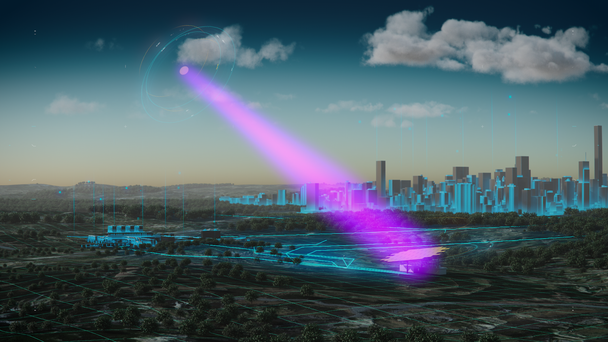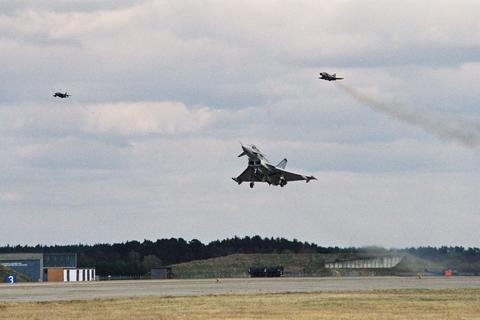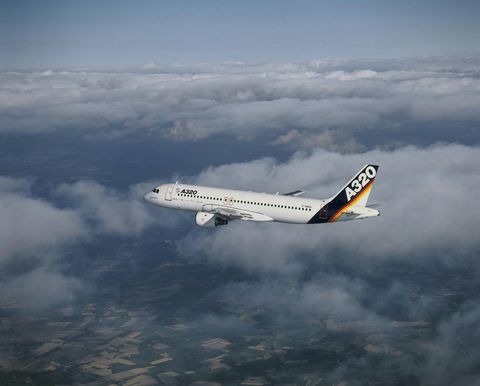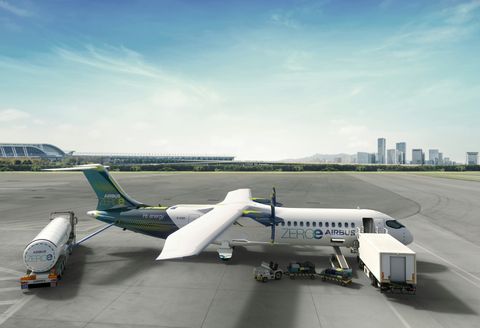Solar power beams: a step towards cleaner energy

Beaming solar power could help Europe access more renewable energies, in an independent way. Airbus has now demonstrated how this new technological concept could work in its X-Works Innovation Factory.
Everything is illuminated, thumbs up. Jean-Dominique Coste, Yoann Thueux and their colleagues have just shown decision-makers from politics and industry the inner workings of a new energy concept, which had until now only been on the radar of die-hard tech experts: Power Beaming.
The underlying principle is quite simple, explains Jean-Dominique Coste, who is responsible for this technology driven by Airbus’ Central Research & Technology and Blue Sky departments: “The potential of the technology is to capture sunlight and then beam it wirelessly.” On Earth, this solar energy would then supply cities, factories, households and eventually aeroplanes with electricity.
New energy networks in the sky
Not least for this reason, Coste says, power beaming could offer Europe and other parts of the world huge potential to tap into renewable energy sources and contribute to the goal of being carbon-neutral by 2050. "Power beaming technologies would enable the creation of new energy networks in the sky and could help solve the energy problem," Coste says. "They would enable countries to fully control and distribute their energy where needed, independently."
The demonstration at Airbus' X-Works Innovation Factory on 27 September 2022 was a success, albeit on a smaller scale: using microwave beaming, Coste, Thueux and their colleagues transmitted green energy between two points representing ‘Space’ and ‘Earth’ over a distance of 36 metres, producing green hydrogen and bringing a model city to life. “Now that we have successfully tested the key bricks of a future space-based solar power system on a small scale for the first time, we are now ready to take Power Beaming to the next level”, says Yoann Thueux.
The demo was undoubtedly a success, but how will the technology work in real life? "We are looking at a number of designs," explains Thueux. One thing, however, is already clear: If satellites were to collect the sunlight, they would need to measure about 2 kilometres across to achieve the same power level as a nuclear power plant.”
Independent and sustainable power supply around the clock
The advantages of collecting solar power in space are obvious, says Thueux: "Outside the Earth's atmosphere, the sun's light is available indefinitely, not just during the day and in good weather like on Earth, plus it’s about 50 percent more intense." For example, in geostationary orbit about 36,000 kilometres above Earth, a solar panel the same size as one of its counterparts on Earth can generate significantly more electricity.
The power collected would be beamed down over a wide area in a safe and controlled manner. Back on Earth, a large number of antennas spread over a wide area, even off-shore, would pick up the beams and the energy would be reassembled to produce electricity. "The beams pass through clouds easily so loss of power is minimal. Also, the technology can be designed to prevent harm to birds or people flying in aircraft," assures Coste. Moreover, there is no need for complex and costly ground infrastructure, power plants, pipelines or cables, for example, to distribute the electricity on Earth. That, too, is done by Power Beaming.
Coste estimates that the levelised costs of energy would be the same as those of large-scale energy projects on Earth such as nuclear power plants, oil rigs and large renewable farms. Costs, though, would decrease as more power factories are built, due to economies of scale. One geostationary solar farm would generate about 2 gigawatts of electricity - the equivalent of one large fossil fuel or nuclear power station on Earth.
Power Beaming: a reality in 10 years?
By the early 2030s, the first operating Power Beaming prototypes could be in use. But there is still work to be done. A major area of research concerns the overall efficiency: getting as much energy as you can from what you harness. “We advocate a stepped approach to scale the system: from the ground, to aerial systems, then in space”, explains Jean-Dominique Coste, adding: “This could in fact be a game changer for aircraft, with the potential to extend the range, reduce the weight, but also to relay power to other places, managing energy like data. This has raised a lot of interest in the energy sector. In the end this will be a joint effort with institutions and the energy industry."


